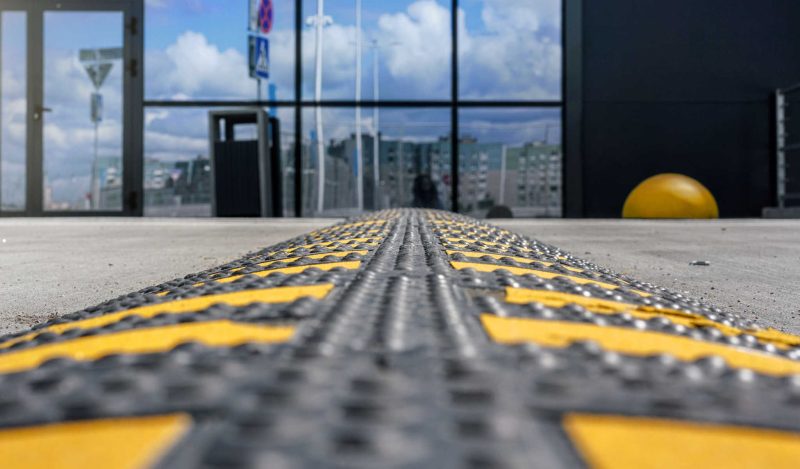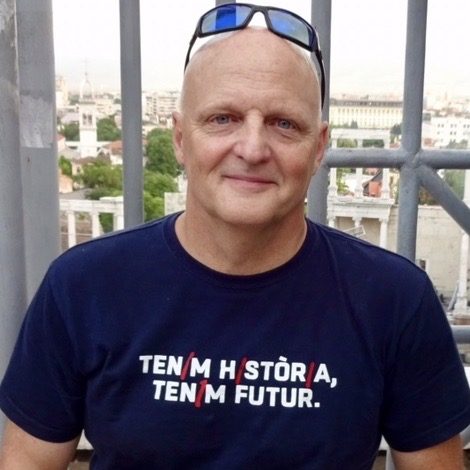The state of Oaxaca, in the south of Mexico, is an extraordinarily beautiful place with gorgeous beaches and an interior defined by both barren and densely forested mountains. But more impressive still is the human diversity of the place. Unlike many other areas of the vast Mexican state, the region’s indigenous cultures continue to live in a relatively high state of cohesion and dignity.
There is one thing, however, that is absolutely horrendous there: driving. And not for the reasons you at first might think.
Yes, some of the interior roads are in ill repair. But what makes driving hell in Oaxaca are the speed bumps, which are of a huge, consistently chassis-scraping size, and are deployed at very tight intervals along most every road or highway. And this is, in my experience, in contrast to what I’ve seen in other parts of Mexico.
Upon returning home after my first visit to Oaxaca I couldn’t get those speed bumps out of my mind. And once on the subject, I couldn’t help noticing how many of them had sprung up in very recent years in Connecticut, especially in the impoverished city of Hartford where I live.
And it got me thinking about what, if anything ,the deployment of these cultural artifacts in Oaxaca, and increasingly in places like Hartford might indicate about the broader cultural matrices within which they are embedded.
The idea of public space that developed in the late medieval and early modern periods was anchored, above all, in a revolution of the idea of interpersonal trust. This was in sharp contrast to the life of the manor from whence many of these first free dwellers of the bourgs (as in the root word of bourgeoisie) had come, where “might” literally did make “right,” and fear rather than trust was the dominant social currency.
Though scholars from northern Europe have often suggested otherwise, Spain was rather well advanced on the road to urbanization when settlers from the Iberian Peninsula began their conquest and pillage of the Americas, as can be seen in the splendid and formulaic sturdiness of cities like Havana, San Juan and Cartagena, Colombia.
But for a number of geographical, political and cultural reasons the Spanish attempt to “civilize”—derived from the same Latin root that gave us the terms “city” and citizens—Oaxaca fell well short of their results in other places. Aware that conquest as they fully desired was probably unachievable there, the Spaniards eventually switched from a strategy of total domination to one of containment. If the native Zapotecs and Mixtecs could not be routed, they would at least have to be controlled.
According to anthropologist Laura Nader, this standoff generated a fascinating dialogue of “controlling cultural practices” between the Spanish elites (and subsequently those of Mexican state) and the authorities of indigenous communities over the ensuing decades and centuries.
What the external and internal imposers of these controlling practices had in common was a deep distrust in the idea that ordinary people, if left to their own devices, were capable of safeguarding what they considered core civic values. And of course when individuals are told repeatedly that they can’t be trusted to exercise civic responsibility, they tend to live down to the expectations, something which, of course, reifies the elite belief in the need to impose ever more stringent controlling practices.
It could be argued, and I think I’d largely agree, that as the weaker party of a cultural clash with a force known for its skill at dismantling other cultures, the top-down approach of the indigenous authorities is mostly justified, and that it is a key reason why the native cultures in Oaxaca are as relatively intact as they are.
But it still does not obviate the fact that individuals there are in many ways seen by those in charge in Mexico DF and in their local governments as needing constant and quite palpable tutelage in the conduct of their civic lives.
Hence the existence of those muffler-massacring and spine-crushing speed bumps everywhere you go.
For all of its obvious failures in practice and its grotesque legacy of racial exclusion, the US was for a long time distinguished from Mexico and from many other societies around the world by its leaders’ expressed belief that citizens, if left to their own devices to organize in culture in bottom-up ways, will more often than not find successful ways of addressing and resolving the collective’s more pressing existential concerns.
This, I suspect, is why I had little or no engagement with speed bumps during my first four or so decades as a licensed driver.
But that’s all gone now.
In the new US, I am, like most of my fellow citizens, considered by those in power to be inherently unable to recognize what is good for myself, or the overall good of the community in which I live. Hence their “need” to constantly nudge me and most others toward “correct” personal and social decisions.
And speed bumps which presume my inherent recklessness and irresponsibility as a driver and citizen are, of course, but one of the many infantilizing “controlling practices” with which we are now assaulted daily.
Are you prepared for the snowstorm? The hurricane? Are you wearing your mask correctly? Did you recycle your disposables? Buckle your seatbelt? Make sure your child is wearing a bike helmet? Done an analysis of your state of erectile health? Use the right pronouns? Did you assume the core fragility and lack of resilience of your interlocutor(s) before openly affirming how you see or interpret this or that aspect of reality?
None of this is to say that the actions suggested above are inherently problematic or bad, but to say that the practice of constantly instructing us about matters that free citizens have long known how to respond to in sensible ways, is in no way accidental or innocent. It is, rather, part of a clear campaign to render us all impervious to the natural development and deployment of our own social instincts.
And to deprive people of the ability to address day-to-day challenges independently through the development of their own personal sensibilities is to effectively keep them in a childish state of dependence before those who the media holds up as “experts” and “authorities.” This, as if history is not littered with the enormous damage done by the abject idiocy of such people. As if getting a certain degree or title shields one from the corrosive presence vanity, greed and self-deception when making judgments.
But this is precisely what we have been told ad nauseam over the last 30 months.
And because so many people have been deprived of the sense of real security that only a combination of hands-on love and personal introspection can bring, millions have passively gone along with this preposterous premise.
Human beings live by stories. The powerful, knowing this, work overtime to furnish them for us, with the proviso, of course, that the narratives exalt “their” values and denigrate those they see as having the potential to make others question their wisdom and omnipotence.
And they know, moreover, that we are creatures of habit and that by placing seemingly innocent but in fact ideologically charged objects like speed bumps in our midst, or establishing ritual practices imbued with clear, if at the same time subtle, ideological messages, they can often bring us around to their way of interpreting “reality.”
We, however, have enormous storytelling and ritual-making capacities of our own. But they can only be accessed and developed if we give ourselves the time and the silence needed to reflect on what it is we really know, feel and desire, not in the context of the pre-masticated options provided by supposedly wise and authoritative others, but in the wonderful silence of our own private imagination, and our own singular way of perceiving and relating to the unending and mind-boggling mystery of life.
This done, we must, as the deeply social and yarn-spinning creatures we are, share our views as fearlessly as we can with others in the hope that people at both ends of the dialogue might infect still others with the hope-spawning idea that we were put on this earth to be a good deal more than passive receptacles of the self-serving verbal and symbolic discourses of our alleged masters.
Think that a speed bump is just a speed bump?
Think again.
Think it’s an accident that so many practices that had no proven epidemiological effectiveness—like masks, social distancing, plexiglass barriers, and draconian regimes of social separation—all also just happened to be excellent ways of inhibiting “unofficial” storytelling, and the sense of solidarity and individual empowerment it always brings?
Think again.
These are classic “controlling practices” designed to gradually leach from each and every one of us—and most infuriatingly those not yet fully socialized—what is arguably our greatest instinctual drive: the desire to weave stories of our own in the company of others that remind us not of what they tell us we are and must be for them, but of the sense of dignity that we all want to feel and, to the best of our abilities, extend to others.
It’s time we made more time for the construction and maintenance of these laboratories of spiritual freedom.
Published under a Creative Commons Attribution 4.0 International License
For reprints, please set the canonical link back to the original Brownstone Institute Article and Author.




